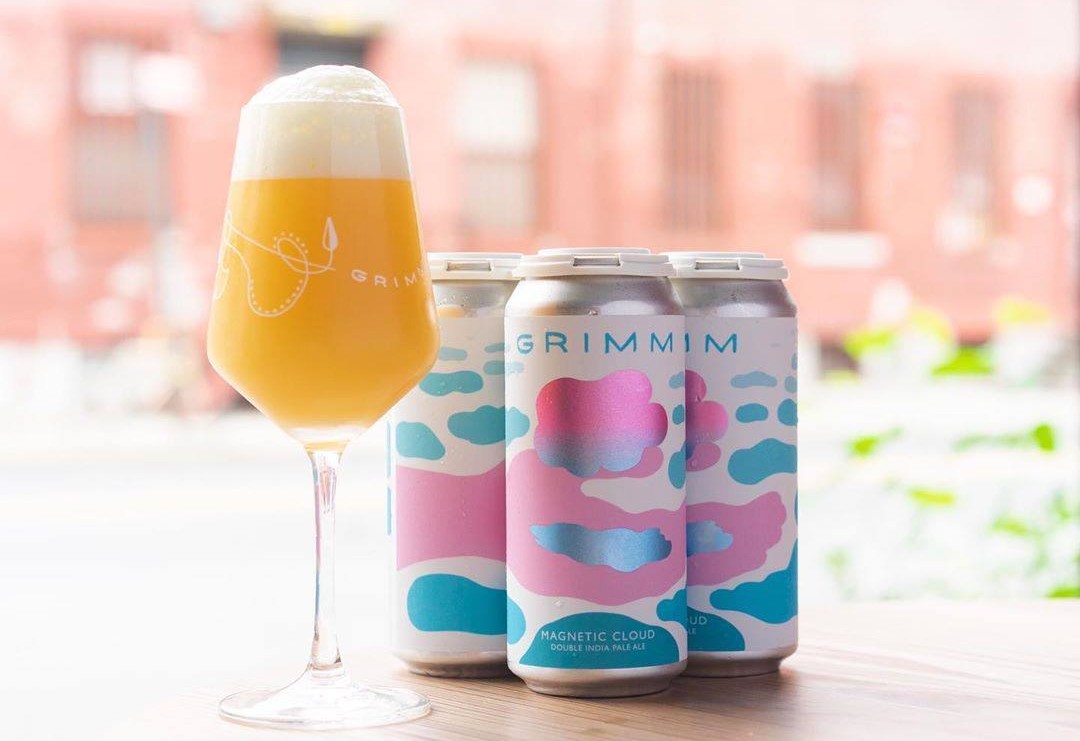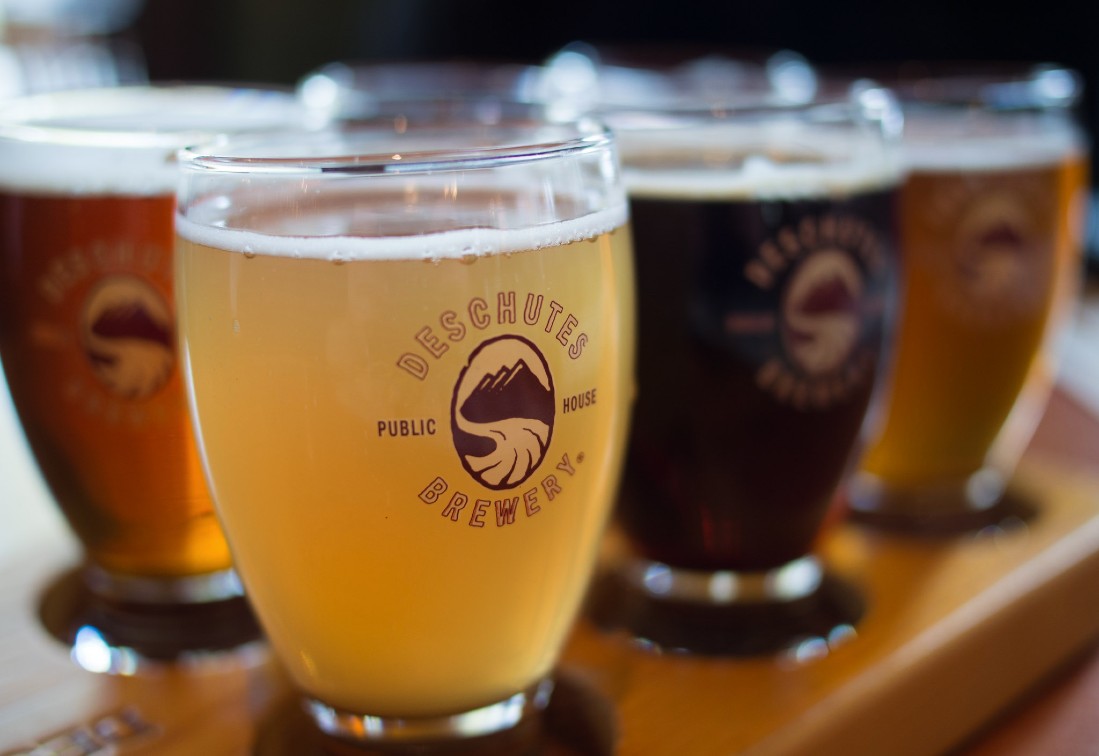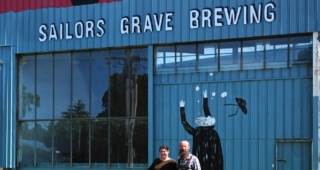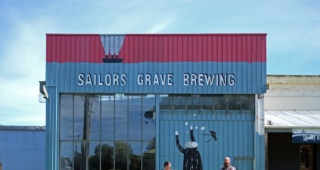In Singapore, a recent check of IPA availability in cans and bottles from American craft breweries shows no shortage of world-class takes on the hallowed beer style. To cite just a few examples, we have Cigar City Brewing’s venerable Jai Alai (95 BeerAdvocate score), Deschutes Brewery’s Fresh Squeezed IPA (95), Alpine Beer Company’s Nelson (99), and even Bell’s Brewery’s Two Hearted Ale (95), sip by sip still one of the finest American-style IPAs in the US.
This is a small, yet representative slice of the imported IPA pie here—if one can afford to do it, drinking fantastic IPAs from great American breweries isn’t a problem, and the same goes in places like Bangkok and Tokyo.
The issue is that fresh is usually best when it comes to IPA, and by default that makes fresh imported IPA a premium and somewhat scarce product around Asia. At the moment my beer closet includes cans of Green Flash Tropical DNA (canned 4/8/20), Lost Coast Hazy IPA (2/14/20), Alpine’s Nelson (4/6/20), and Coronado Brewing Co’s Never Better (3/12/20), all of which I’ve purchased in the past few weeks. That these are all at least a few months old doesn’t equate to any death knells, though I’m now reminded to kill the rest of those Lost Coasts tout de suite.
No, they all still taste fine and in some cases great, but they’re just… not fresh. The hoppy knockout punches that make those beers sing in their freshly canned states have by now softened to jabs. Think of it like the difference between a right from Boxcar Bob and one from Drederick Tatum.

Increasingly the solution to this IPA calamity is air freight, which is like shipping beers by overnight service instead of by regular mail. By air, a modest beer shipment can get from Point to A to B in days; by ocean freight it can take weeks or in some cases months. Air freight is safer and more reliable, but also expensive; ocean freight is cheaper, better suited to high volume shipments, and leaves a smaller carbon footprint.
My aforementioned closet beers arrived by ocean liner; several Grimm Artisanal Ales IPA cans I recently scooped up touched down at Changi Airport. Regardess of overall beer quality—and more on Grimm in a minute—it felt damn good getting socked for once by a Tatum-style punch of fresh hoppy flavor.
Air freighting beers isn’t a new concept by any means. Breweries and importers around the world have done it for a long time when the occasion calls for it—say an overseas festival (remember beer festivals?) or beer competition. In Southeast Asia, however, air freighted direct-to-consumers beers are still a special event catered to the more hardcore beer enthusiasts. But they’re working.
See recent remarks by Smith Street Taps sales guy Sylvester Fedor, who told us a pallet from the UK’s Verdant Brewing landed in Bangkok with cans that were a week old. And from Beervana International co-founders Brian Bartusch and Aaron Grieser, the latter referencing the rising number of Thai importers who “seem to do one-time only special releases of air-freighted beer.” And our brief Q&A, below, with Temple Cellars and Off Day Beer Company co-founder Kasster Soh, who speaks with us about a pallet from Grimm Artisanal Ales that Temple Cellars recently air freighted to Singapore.
In some circles raw high-quality IPA availability isn’t always enough anymore; there’s a clear, understandable, pent-up demand for freshness. When you’re already paying SGD$8 for a 330ml can of Alpine Nelson that’s more than two months old—and that is a fantastic beer, by the way—would you pay $16.50 for a 473ml can of Grimm’s Phantom Power IPA that’s less than two weeks old?
More than enough people here would and did.
Nevermind that Grimm Artisanal Ales isn’t a big exporter with a huge international presence, or that this pallet marked the first time its beers were available in Singapore—most of those beers, none of them particularly light on the wallet, were gone via pre-order by the time they arrived. I think it was a similar story with Verdant recently in Bangkok and with other air-freight specials of late around the region.
Though price dictates they be considered a specialty product, there is a market in Asia and Southeast Asia for ultra-fresh, high-quality IPAs from cult breweries like these two. And I suspect we’ll see more and more of this as overseas craft breweries, some out of necessity and others out of growing ambition, dip their toes into the lucrative Asian market with cold-chain, quality-control assurances in place.

Lauren and Joe Grimm co-founded Grimm Artisanal Ales in 2013 in Brooklyn, NY, bagging several awards between then and when they opened their beautiful brewery and taproom in 2018 in Williamsburg. After several attempts we were unable to connect with Grimm for comments here, so instead of getting it direct from the horse’s mouth, I thought the next best thing would be to get thoughts on the brewery from a local mouth the horse lubricates… or something like that.
Here we speak with Soh on Temple Cellars’ success with Grimm and plans for future exclusive air-frieght beers. We also track down Andrew Thell, a Brooklyn-based beer enthusiast, homebrewer, and longtime Grimm supporter who lives a few blocks away from the place; in his mind Grimm is the best brewery going for the New York metropolitan area. Since this is a rare US-focused story for Beer Travelist, we also ask Thell to compare the craft beer cultures of New York and Portland, the latter a sort of home away from home away from home for him.
Beer Travelist: How did this come about, and can you briefly explain the import process for these particular beers, some of which were here two weeks or so after they were canned?
Kasster Soh: Working with Grimm Artisanal Ales, much like Wildflower and Hop Nation before, is a continuation of what we have always strived to do at Temple Cellars—bring the best beers from all over the world to the Singapore beer community.
This was always going to be a logistical challenge. Grimm is known for fresh IPAs and sours, so cold-chain logistics and a quick turnaround were necessary to deliver the best and freshest version of the IPAs, in particular, which is why we decided on the costlier option of air freight. That process is fairly straightforward—we got the shipment out of the brewery on a Friday, on the plane on a Saturday, and in our walk-in chiller in a matter of days. Taking this direct-to-consumer approach without an importer in between allowed us to keep this financially feasible for both ourselves and customers.
(Ed note: For reference, 473ml IPA cans retailed SGD$16 – $18/per, while 500ml sour bottles ranged from $25.20 – $35.50.)
BT: That shipment mostly sold out by pre-order. Were you expecting that? And did you see any specific buying trends at Temple Cellars during the extended lockdown Circuit Breaker?
Soh: I was completely taken by surprise, but some of our team here saw what was coming. I think the success partly came down to both pent-up demand and to Grimm’s cult reputation.
For us the past two months have been a refreshing departure from business as usual. We have seen a definite increase in bulk buying of our staple beers, which include Garage Project Beer, Heretic Juicier Than Thou, Stone & Wood Pacific Ale, and Deschutes Fresh Squeezed IPA. Seasonal and special release beers have also seen as uptick, though not with the same vigor as our core beers.
Beyond sales patterns, we’re excited about the group of new drinkers that has emerged from the work-from-home pivot. We’re optimistic that, coming out of this pandemic, we’ll see a more mature and educated set of craft beer drinkers.
BT: Are there plans to soon make other breweries exclusively available at Temple Cellars?
Soh: We’re always talking to breweries! Grimm just happened to be one that piqued our interest and, rather selfishly, we wanted to taste those beers ourselves. There are a few more New York breweries that we’d be keen to bring in, though nothing is confirmed at this point. Going back to an earlier statement, we just want the Singapore beer community to have access to the best beers from the world over. If we’re excited about a brewery, there’s a good chance that you will hear about it!

Beer Travelist: What stands out about Grimm Artisanal Ales in comparison to some of the other NYC breweries?
Andrew Thell: Grimm is the best brewery going in the New York City metro area and it would be the one I’d import anywhere. I’ve been a fan since first coming across them on tap, and then some of their bottles in local Brooklyn craft shops, around 2014 or 2015. Those were always small-batch gypsy brews, always rare, and always interesting.
At that point they were making some IPA juice bombs and playing with a clear Belgian classic influence in their fermentations, but also pushing the envelope with unusual ingredients and flavor combinations. For example, I got a 22-ounce bottle of their Super Spruce gose that was brewed with pine needles, saved it for Thanksgiving dinner 2016, and it was the perfect beer for the occasion. Their series of Pop! sours has been a recurring treat over the years for special occasion desserts.
After following them closely for a few years it was a pleasant surprise to see their physical brewery and taproom slated to open on Metropolitan Avenue, about six blocks from my front door. Since then I’ve been visiting (or getting their beer delivered during this COVID-19 nonsense) about once or twice a month. In that time what’s struck me is that, despite being obviously high-end and high-concept beers, they’re always approachable and drinkable.
I’ve brought a lot of non-beer snobs to the taproom the last couple years and nobody has wrinkled their nose, which is unusual for this kind of hoity-toity brewery making unusual brews.
BT: How would you describe their beers? Any favorites?
Thell: The term “crushable” gets used a lot these days, but their beers are almost all just that. It’s not uncommon to get sick of a sour by the end of the glass or an IPA by the end of the pack, but that doesn’t really happen with Grimm beers. They also keep it fresh, with new brews and new concepts to try on tap or in cans every time I swing through. (If you’re around here, be sure to bring your growler because the price of fills on high-end beers is surprisingly reasonable.)

To keep making hits over and over like this isn’t a fluke. Whenever you go they’ll have a nice, familiar pilsner or lager that still has some element that makes your tastebuds take notice. They’ll have a variety of sours, each more beguiling than the last. And, of course, they’ll have their specialty, a suite of juicy IPAs with expertly blended hop bills that jump out of the glass with their big aromas and pillowy mouthfeel. And they’ll be happy to give you a sample of all of them.
It’s hard to pick favorites given the constantly rotating menu, but I remember enjoying Afterimage, Cloudbusting, Cube, Heliogram, and Hyperfocus, among many others.
BT: You spend a lot of time in Portland. How does craft beer culture there compare with that of NYC?
Thell: NYC’s craft beer scene has certainly come into its own the last decade or so, but it’s no match for the craft beer capital of the world. Portland proper has more than 50 breweries for just over 600,000 people, and then 80-something breweries for 2.5 million people in the metro area. New York City has around 25 breweries for 8.4 million people, so it’s hard to compare.
Craft beer is ubiquitous in Portland—you go to a corner restaurant or a grandparent’s house and they all have fresh, local craft beer. It’s what everyone has with dinner. You’re never more than a few blocks from a brewery and, because it’s everywhere, it’s competitive. Not only are breweries trying to outdo one another in terms of quality, but they have to be competitive on prices. It’s not expensive to go out and get a few pints of stinking-fresh IPAs in Portland like it is in most other places.


Part of that is because Portland has a more long-standing and entrenched beer culture. Everyone is a beer snob. Craft beer got popular here in NYC in the last 15 years or so and it’s catching on, and we’ve seen it grow in places like my hometown of Minneapolis, as well, after they’ve enacted local laws to allow breweries to sell onsite, or brewpubs. That’s a recent development, but in Portland they’ve been doing brewpubs since the mid-80s.
The other more obvious reason for the beer culture is the terroir. The Willamette Valley is perhaps more known internationally for their world-class pinots, but what makes it great for wine also makes it one of the premier hop-growing regions in the world. The rest of the country’s (and many other countries’) beer is made from these hops, not just in terms of volume but also quality. Most of the best IPA hops come from around here, though New Zealand and Australia are catching up.
You read your IPA cans and see hops like Amarillo, Cascade, Chinook, Centennial, Citra, Mt. Hood, and Mosaic? Those are all grown in Oregon. That locality also allows for and encourages an emphasis on freshness you don’t see in a lot of other places. This has become more common the last few years in the beer world everywhere, but beer freshness is emphasized in Portland like seafood or produce is in other places.
Speaking of which, Portland’s seafood is really good, too.
###
Grimm Artisanal Ales photos courtesy of Temple Cellars. First Oregon shot taken by Allagash Brewing for Flickr. Deschutes Brewery photo taken by Flickr user Karen Neoh.





